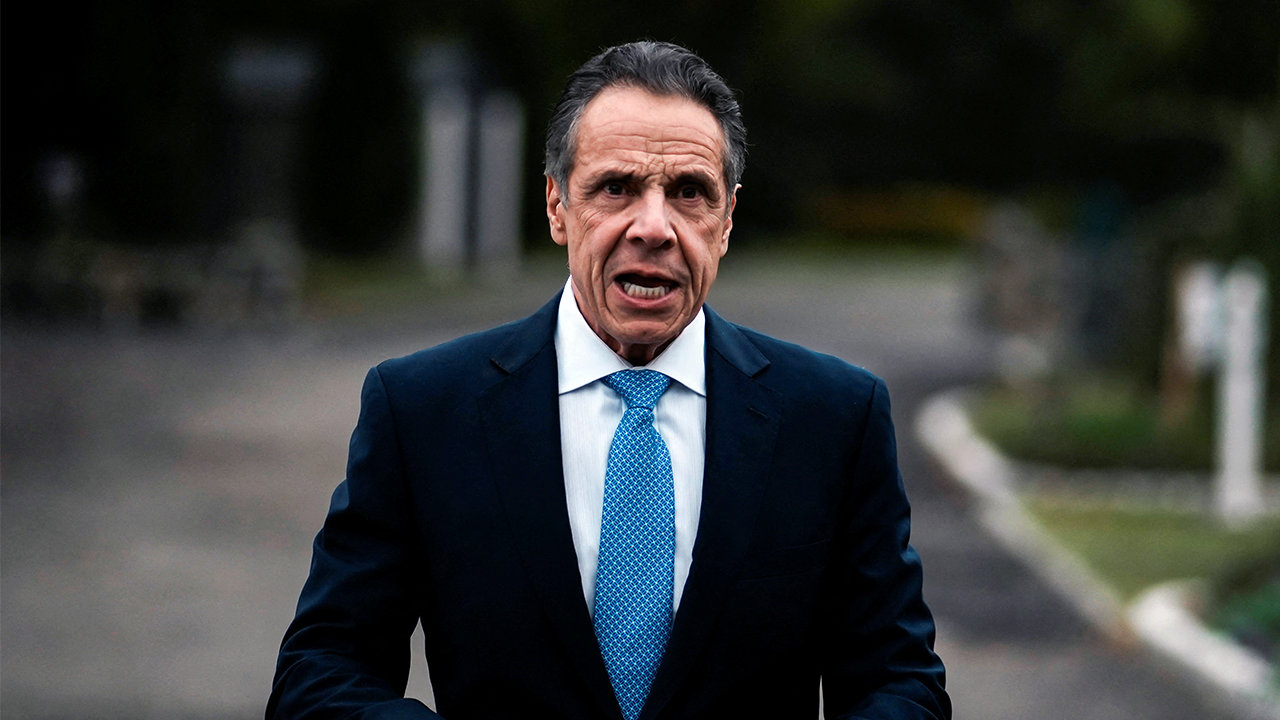Copyright Forbes

“Facially unlawful” could be the phrase of the year when it comes to whether the long-promised deconstruction of the administrative state actually happens. An undercurrent of Donald Trump’s regulatory agenda involves using the Administrative Procedure Act’s “good cause” exemption, which the administration interprets as rendering notice-and-comment proceedings unnecessary “where repeal is required as a matter of law to ensure consistency with a ruling of the United States Supreme Court” in decisions such as West Virginia v. EPA (2022) and Loper Bright (2024). Executive Order 14192 (“Unleashing Prosperity Through Deregulation”) set the tone with its one-in, ten-out rulemaking pace, while E.O. 14219 (“Ensuring Lawful Governance and Implementing the President’s ‘Department of Government Efficiency’ Deregulatory Initiative“) sought to affirm that regulations must be squarely authorized by federal statutes. The latter was reinforced by Trump’s April 9 Presidential Memorandum on “Directing the Repeal of Unlawful Regulations” and subsequent guidance). The administration maintains that “[r]etaining and enforcing facially unlawful regulations is clearly contrary to the public interest.” It has expressed concern over tepid follow-through on these directives in a new White House Office of Management and Budget (OMB) memorandum titled Streamlining the Review of Deregulatory Actions. Agencies are naturally disinclined to roll back their own rules, Months after the initial directives, the Spring 2025 Unified Agenda shows little agency activity in using “good cause” to eliminate major rules—with a few exceptions such as a Council on Environmental Quality interim final rule (IFR) rescinding National Environmental Policy Act implementing regulations. “To date,” the OMB memo observes, “agencies do not appear to be fully maximizing their energy in carrying out these directives.” In response, the memo seeks to: Speed and streamline OMB review of rules—14 days for repeals of facially unlawful regulations and 28 days for open-comment deregulatory actions, compared with the current longer timelines and extension allowances. Prioritize repeal of regulations that are facially unlawful using the APA’s “good cause” exception. Develop stronger factual and record arsenals to support deregulatory stances and to treat deregulation as a distinct category of rulemaking. Overall the memo signals a new preferential stance toward deregulation; in particular, expanding private freedoms and securing beneficial synergies from simultaneous rollbacks. It “encourages agencies to work with OMB, the public, and the interagency community to identify, preview, and develop deregulatory actions that adhere to the requirements of EO 14192.” MORE FOR YOU Law firms and trade groups immediately noted the significance of streamlining compliance with existing E.O.s when deregulating, rather than writing new rules. They also flagged the likelihood of faster regulatory dockets. Progressive groups, by contrast, described the memo as “pure deregulatory propaganda.” Applause for Good Cause? A 2025 Government Accountability Office (GAO) report on Regulatory Flexibility Act compliance references how agencies may employ the APA’s “good cause” exemption and skip a notice of proposed rulemaking (NPRM) if they deem that process: “‘[I]mpracticable’ when the rule must be published by a statutory deadline, ‘unnecessary’ when the rule pertains to technical corrections, and ‘contrary to the public interest’ in an emergency situation.” The scale of use (or abuse) today is unclear, but a 2012 GAO report found that agencies did not publish an NPRM for about 35 percent of major rules and 44 percent of nonmajor rules issued from 2003 through 2010. Of those, the “good cause” rationale was invoked for 77 percent of major and 61 percent of nonmajor rules published without an NPRM. Trump’s deconstruction approach turns that convention on its head—seeking to use “good cause” not to add regulations, but to subtract them. Recent Supreme Court decisions curbing Congress’s over-delegation and reinforcing the “major questions” doctrine have cast a shadow over numerous existing rulemakings. Emergency Vs. Procedural Use For Interim Final Rules Prominent examples of rules imposed without pre-promulgation notice-and-comment by invoking “good cause” include the COVID-era national eviction moratoria overturned by the Supreme Court, vaccine mandates for Medicare/Medicaid-certified providers, and the Consumer Financial Protection Bureau’s requirement for written notice about eviction protections. Environmental Protection Agency increases in civil penalties are another instance. Some uses of IFRs are not agency-initiated but stem from specific court orders. The administration now argues that court decisions with broad applicability can also justify reducing obligations and expanding rights. Beyond emergencies, use of IFRs to impose sweeping rules appears uncommon. The “good cause” exemption more often applies to changes in compliance dates, technical corrections or other non-major adjustments. In some cases IFRs may be rooted in statute, such as certain hydrofluorocarbon phasedowns under the American Innovation and Manufacturing Act. An EPA IFR adjusting Clean Air Act deadlines for nonattainment state plans called itself “merely a ministerial act intended to implement the Court’s order.” Perfunctory Response To Public Input While new data are needed to update the 2012 GAO findings, skipping notice and comment to add major rules (outside emergencies) may be less troubling than agencies ignoring substantive feedback when they after they have solicited it. Even when agencies follow notice-and-comment, they may ignore or dismiss substantive feedback, making the process little more than a formality. In that light, using the APA’s “good cause” exemption to remove rules that are legally shaky after Supreme Court rulings may become not only justified but necessary to restore administrative balance in the administration’s view. Agency behavior sometimes illustrates the “futility” of the notice-and-comment process in the view of some when outcomes are predetermined. Examples include endangered species critical habitat designations climate-related rulemakings in which agencies invoke urgency to disregard objections from states, industry, and economists regarding technological feasibility and the costs of measures such as vehicle greenhouse gas emission standards. The EPA received a tidal wave of comments (granted, many form-based) on its Clean Power Plan raising statutory and constitutional objections but largely dismissed substantive feedback. The rule was ultimately vacated in West Virginia v. EPA. Similarly, Waters of the United States (WOTUS) rulemakings by the EPA and the Army Corps of Engineers expanded the definition of “navigable waters” and imposed sweeping land-use. Thousands of comments cited statutory and takings concerns that were brushed aside. The expansive definitions were later struck down in 2023’s Sackett v. EPA (2023). Ironically, the agencies’ post-Sackett correction was itself issued as an interim final rule. The Securities and Exchange Commission’s Climate Disclosure proposal likewise drew thousands of comments in objection, and is on hold only because of the change in administration. Agencies may unfairly disregard public comments and make the notice-and-comment process appear at times a hollow formality, but it is crucial nonetheless to note those very comments are vital in court decisions that later overturn agency actions. Deregulatory Symmetry To Restore Balance The administration argues that the same APA that lets agencies bypass deliberation for “good cause” or proceed with predetermined outcomes under perfunctory notice-and-comment—reducing the process to ritual compliance rather than real deliberation—should now permit dismantling rules that courts have shown by implication were never lawful. The NEPA rule was noted above, but so far there have been few major rollbacks of this kind. The Treasury Department has deleted some obsolete rules, and the Federal Communications Commission launched its “Delete, Delete, Delete” program. A multi-agency IFR accommodated certain religious and moral objections to providing medical services, and several migration-related IFRs have been issued. But the sweeping reversals OMB appears to expect have yet to materialize. While traditional notice-and-comment rulemaking has slowed—putting 2025 on track for the lowest number of rules in history—most major rollbacks have occurred through the 16 Congressional Review Act resolutions disapproving Biden-era rules rather than via Trump’s executive order mechanisms. If ignoring thousands of objections once satisfied the APA’s spirit when expanding regulation, removing such rules in light of Supreme Court rebukes can equally satisfy it when restoring constitutional order. At the very least, that premise is going to be tested in new court decisions. The Streamlining memo is explicit in invoking the APA for deregulation rather than in defense of the facially unlawful: “Because the regulation is contrary to law and nothing that might emerge during the comment period can cure the regulation’s unlawfulness or overcome the agency’s non-discretionary inability to retain or enforce it, notice and comment are superfluous and ‘unnecessary’ within the meaning of the APA.” “In short,” the White House directs: “[Y]our agency should identify and rescind regulations where (a) the question is clearly one of lawfulness or unlawfulness under the ten Supreme Court cases listed by in the April 9 Presidential Memorandum, and (b) where the agency has determined that the best interpretation is that the regulation is unlawful. Where the agency is convinced that the regulation is unlawful and that position has a reasonably good chance of success on the merits, the regulation should be repealed. Nevertheless, the agency should provide a brief statement of why the identified regulation is unlawful and good cause exception applies.” If agencies can add rules in “hair-on-fire” fashion, perhaps they can also use “good cause” to eliminate unlawful ones when failure to do so would itself be “impracticable, unnecessary, or contrary to the public interest.” If courts reject these deregulatory uses, then all reliance on “good cause” and interim final rules may face scrutiny. Whatever the outcome, the “good cause” ratchet must not tighten in only one direction. Progressives leave no stone unturned in finding ways to expand administrative power. No stone should be left unturned in deconstructing it and restoring constitutional balance. But novel deregulatory uses of “good cause” represent a boulder to lift, not a pebble in today’s regulatory culture. Conclusion: Congress To The Rescue The latter third of Streamlining the Review of Deregulatory Actions—with its emphasis on deregulation as agencies’ default presumption—contains the makings of a new executive order to replace the Clinton-era E.O. 12866 (“Regulatory Planning and Review”) and prominent regulatory review guidance such as Circular A-4 (“Regulatory Analysis”) which vested undue primacy with agencies themselves. It’s a bold stance to assert that: “[W]here a regulation contravenes a duly enacted statute, the Constitution, or prevailing Supreme Court precedent, Congress cannot have intended for agencies to delay repeal through a futile notice-and-comment process.” The effort to get agencies to internalize the goals of deregulation and freedom and competitive rather than politicized disciplines based on recent Supreme Court interpretation will be a slog. The Streamlining memo opens optimistically with conciliatory language about using the guidelines “to make OIRA [OMB’s Office of Information and Regulatory Affairs] your partner in the deregulation agenda.” But agencies have rarely developed their own deregulatory agendas. Such efforts typically arise from external pressure or deregulatory-minded appointees whose agendas vanish once progressives return. This highlights the enduring structural flaw of the administrative state: governance by executive order. Congress must assume responsibility and accountability for agency rules, which are laws in every sense. In the meantime, to make any “streamlining” stick, Congress will need to codify successful Trump-era rescissions, rollbacks, delays, and guidance-discipline measures—ensuring they cannot be undone by future administrations. Is it OK to trade a facially unlawful administrative state for a facially lawful Constitution? We may find out.



